Massively parallel implementation in Python of a pseudo-spectral DNS code for turbulent flows
Assoc. Professor Mikael Mortensen
Department of Mathematics, University of Oslo
Center for Biomedical Computing, Simula Research Laboratory
KAUST
4/5 - 2016
Direct Numerical Simulations of turbulence are performed with low-level Fortran or C

3D + time and HUGE resolution
Serious number crunching - extreme computing
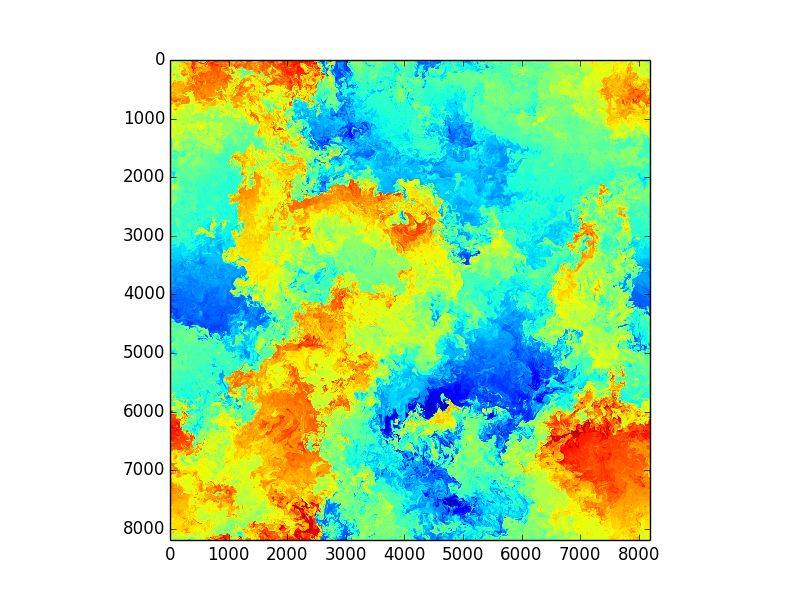
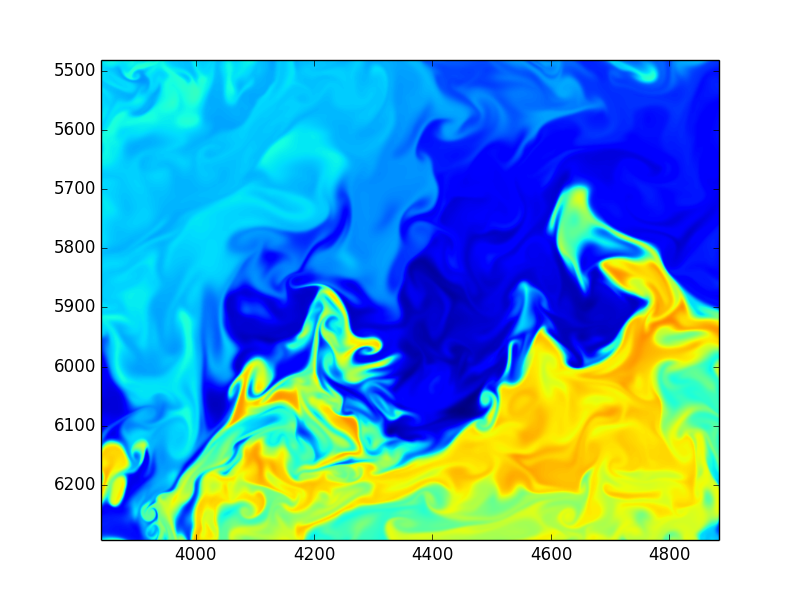
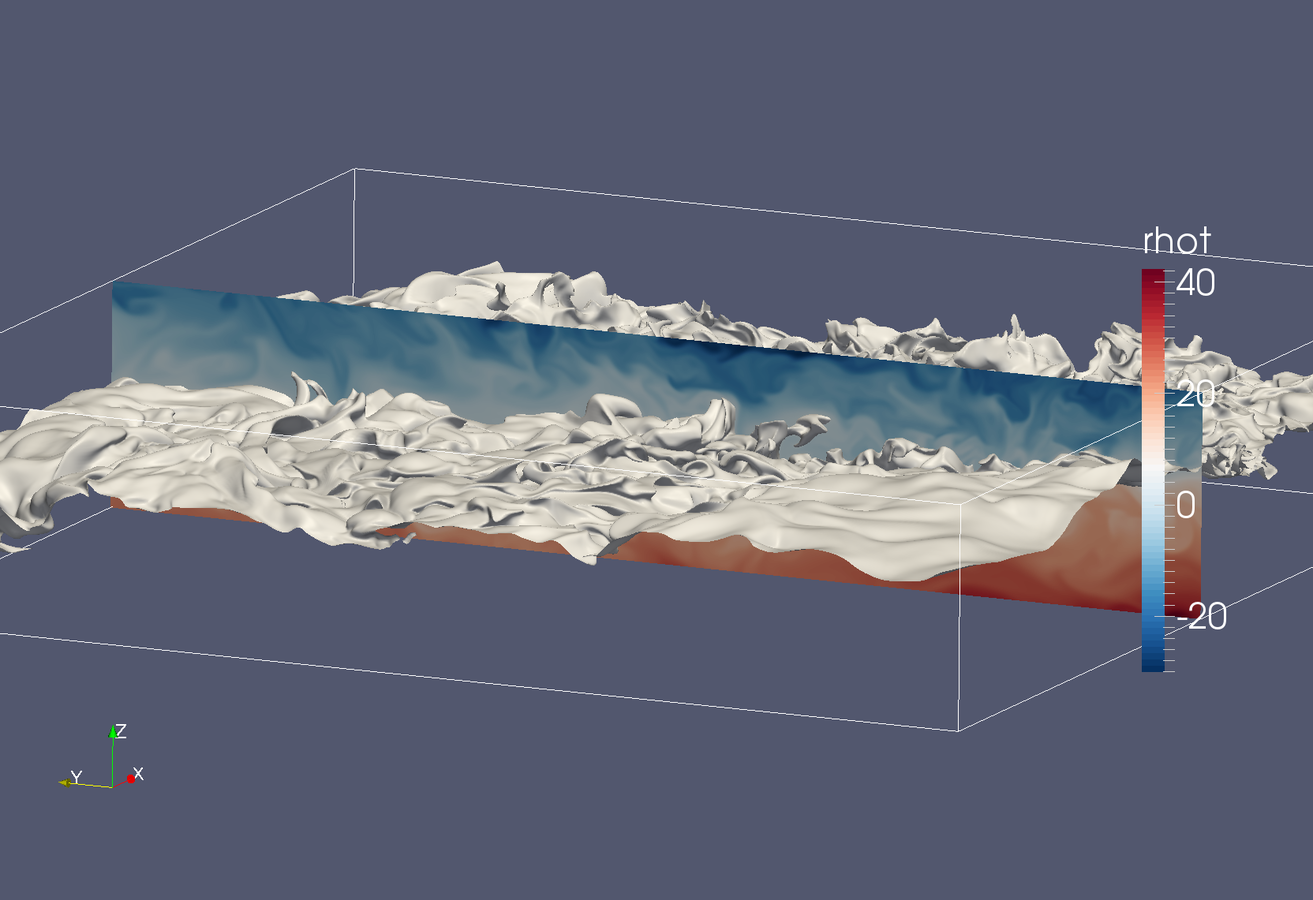
Images from huge DNS simulations by S. de Bruyn Kops, UmassAmherst, College of Engineering
Is it possible to write a competitive, state of the art turbulence solver in Python?
From scratch?
(Not just wrapping a Fortran solver)
Using only numpy/scipy/mpi4py?
Can this solver run on thousands of cores?
With billions of unknowns?
As fast as C?
Turns out 100 lines of Python code can get you almost there!

Turbulence is governed by the Navier Stokes equations



Triply periodic domain
Fourier space

Navier Stokes in spectral space

Eliminate pressure and solve ODEs:
Pseudo-spectral treatment of nonlinearity
Explicit timestepping (4th order Runge-Kutta)
Classical pseudo-spectral Navier-Stokes solver
The kind that has been used to break records since the day of the first supercomputer
Implementation
A few computational details
A computational box (mesh) needs to be distributed between a (possibly) large number of processors
Mesh size:
Pencil
Slab
CPUs
CPUs
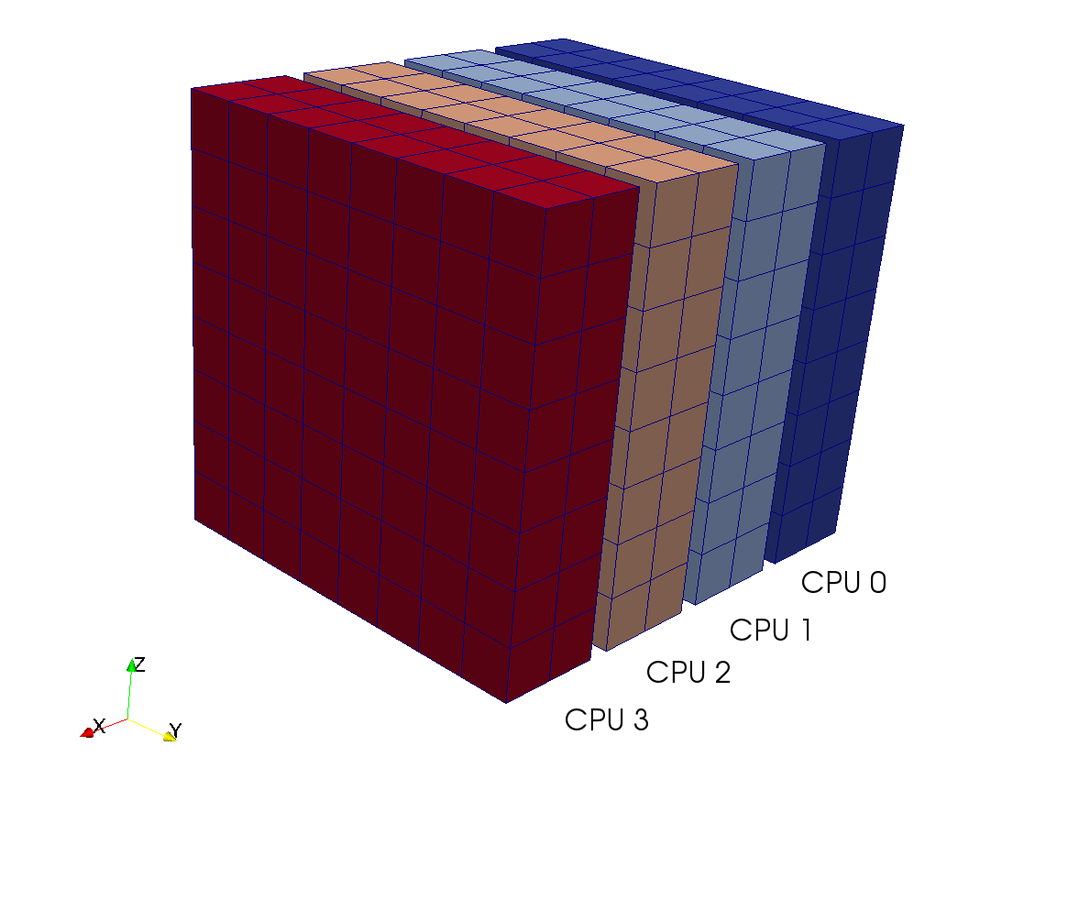
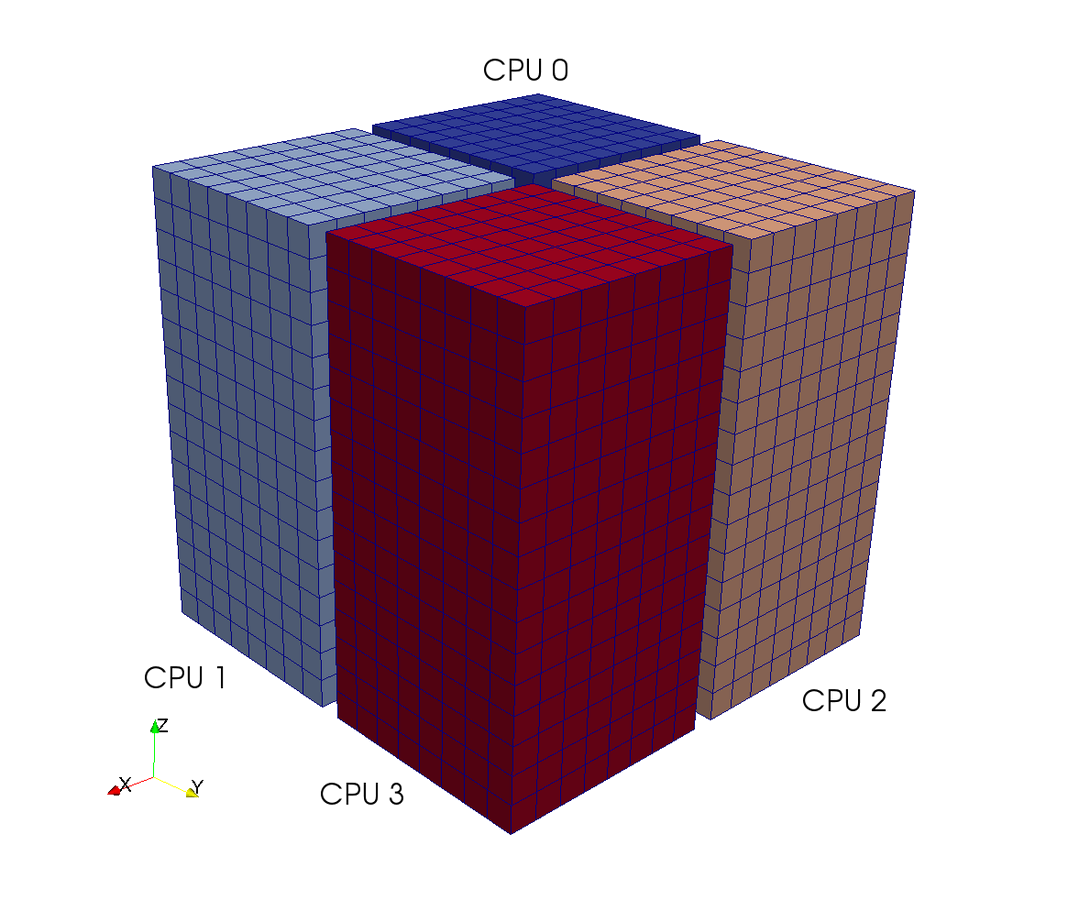
mpi4py
by Licandro Dalcin at KAUST
Wraps almost the entire MPI library and handles distribution of numpy arrays at the speed of C
from mpi4py import MPI
comm = MPI.MPI_COMM_WORLD
print "Hello Licandro from rank", comm.Get_rank()>>> mpirun -np 1000 python HelloLicandro.py
Hello Licandro from rank 0
Hello Licandro from rank 1
Hello Licandro from rank 3
...MPI is basically needed to do 3D forward and backward FFT
and some postprocessing
HelloLicandro.py:
3D FFT with MPI
Slab decomposition (max N CPUs)
There are a few low level 3D FFT modules with MPI (e.g., libfftw, P3DFFT) but none that have been wrapped or is easily called from python
Need to adapt single core FFT
(numpy.fft, scipy.fftpack, pyfftw)
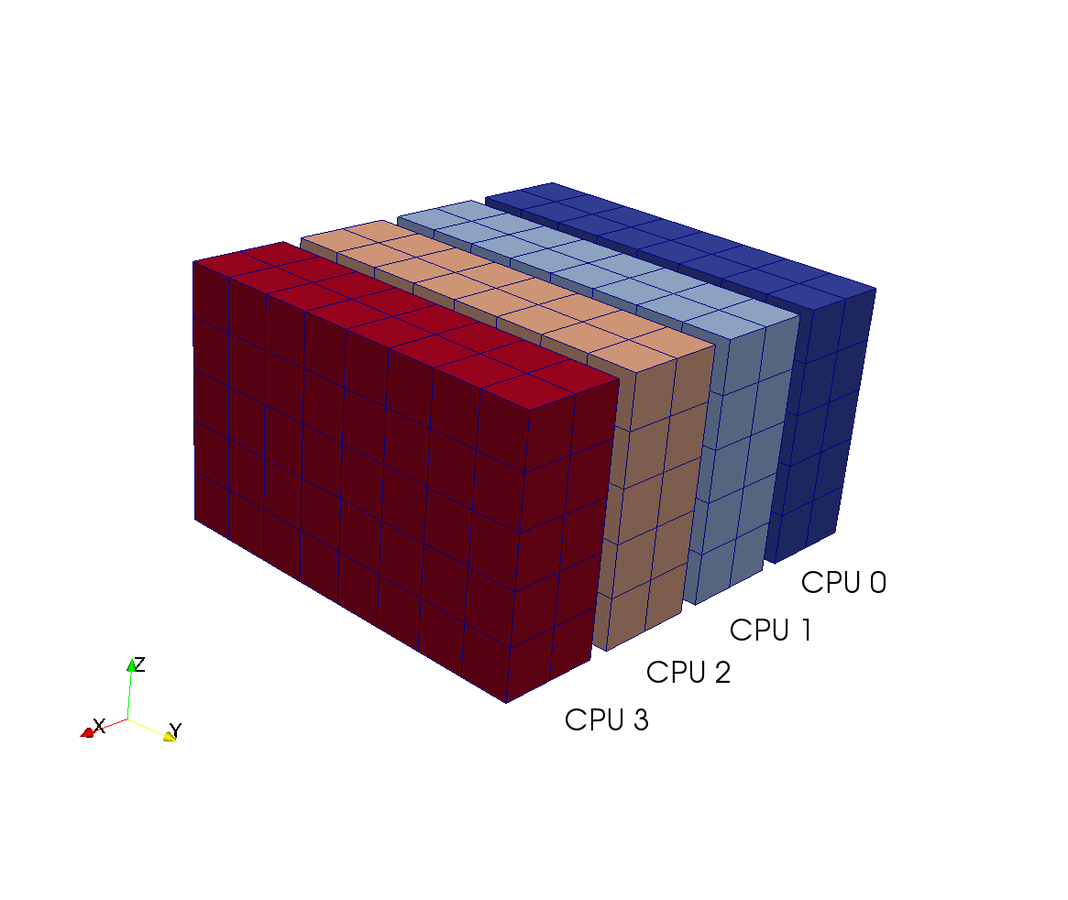
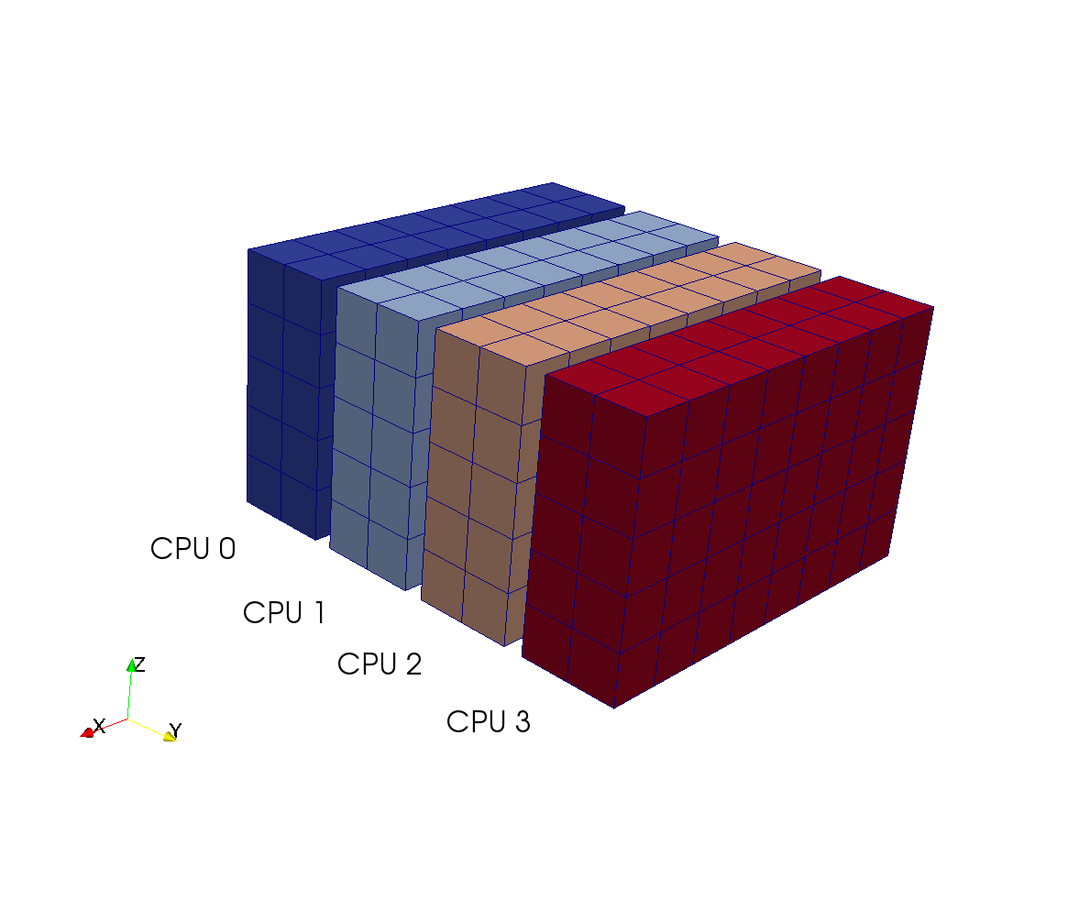
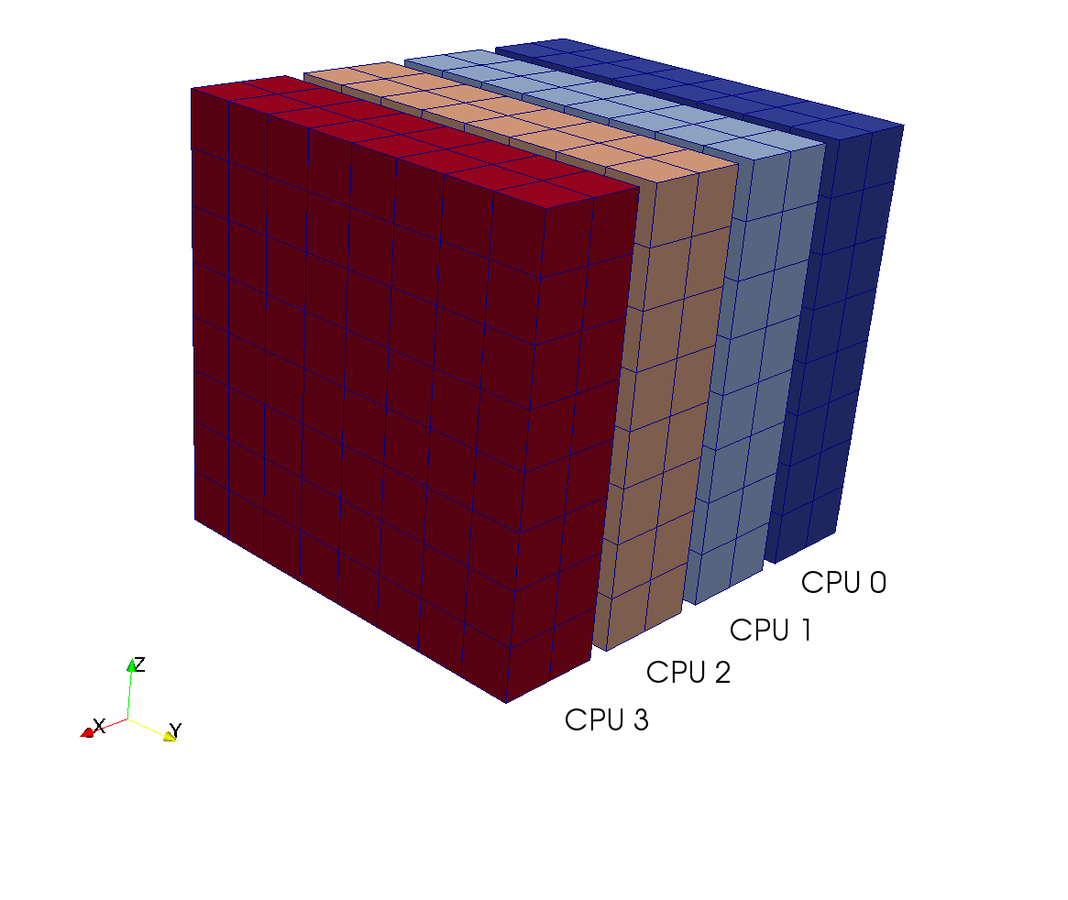
3D FFT with MPI
in a nutshell
real FFT in z, complex in y
No MPI required
Transpose and distribute
Then FFT in last direction



- 2D FFTs in Y-Z planes (local)
- transpose operation
- distribute data (MPI Alltoall)
- FFT in X-direction
What does it really take?
Done!
3D FFT with MPI
in a nutshell
import numpy
from mpi4py import MPI
comm = MPI.COMM_WORLD
num_processes = comm.Get_size()
# Consider a problem of global size (N, N, N)
N = 128 # Must be power of 2
Np = N / num_processes # Decomposition - each process has Np items along x-direction
# Declare some work arrays used for the transform (could be done without Uc_hatT)
Uc_mpi = numpy.zeros((num_processes, Np, Np, N/2+1), complex)
Uc_hatT = numpy.zeros((Np, N, N/2+1), complex)
def rfftn_mpi(u, fu):
"""3D FFT with MPI"""
Uc_hatT[:] = numpy.fft.rfft2(u, axes=(1,2)) # 1!
Uc_mpi[:] = numpy.rollaxis(Uc_hatT.reshape(Np, num_processes, Np, N/2+1), 1) # 2!
comm.Alltoall([Uc_mpi, MPI.F_DOUBLE_COMPLEX], [fu, MPI.F_DOUBLE_COMPLEX]) # 3!
fu[:] = numpy.fft.fft(fu, axis=0) # 4!
return fu
# Create a variable U(N, N, N), distributed along first index
U = numpy.random.random((Np, N, N))
U_hat = numpy.zeros((N, Np, N/2+1), complex) # This is the transform
# Perform transform
U_hat = rfftn_mpi(U, U_hat)
# Now do the inverse
Uc_hat = numpy.zeros_like(U_hat) # Intermediate work array
def irfftn_mpi(fu, u):
"""Inverse 3D FFT (irfftn) with MPI"""
Uc_hat[:] = numpy.fft.ifft(fu, axis=0) # 1!
comm.Alltoall([Uc_hat, MPI.F_DOUBLE_COMPLEX], [Uc_mpi, MPI.F_DOUBLE_COMPLEX]) # 2!
Uc_hatT[:] = numpy.rollaxis(Uc_mpi, 1).reshape(Uc_hatT.shape) # 3!
u[:] = numpy.fft.irfft2(Uc_hatT, axes=(1,2)) # 4!
return u
U_copy = numpy.zeros_like(U)
U_copy = irfftn_mpi(U_hat, U_copy)
assert numpy.allclose(U_copy, U)real FFT in z, complex in y
No MPI required
Transpose and distribute
Then FFT in last direction



4 steps!
How many lines of code in C++/Fortran?
That's right 4!
And I'll walk you through the whole thing
In Python?
Pencil decomposition
Up to CPUs but complicated!
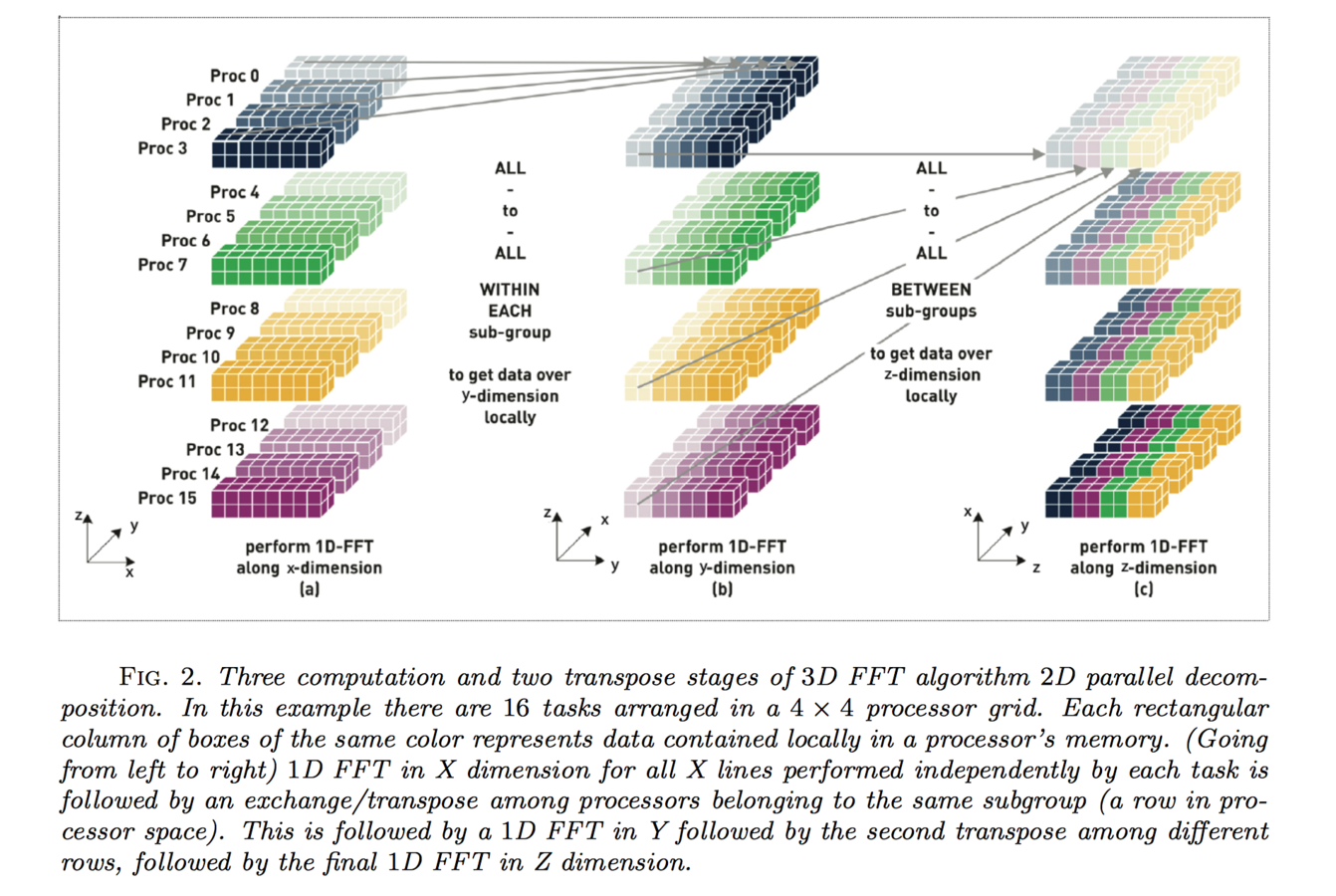
From D. Pekurovsky SIAM J. Sci. Comput., 34(4), C192–C209
Pencil decomposition
in a nutshell
rfft(u, axis=2)
Transform
fft(u, axis=0)
Transform
fft(u, axis=1)

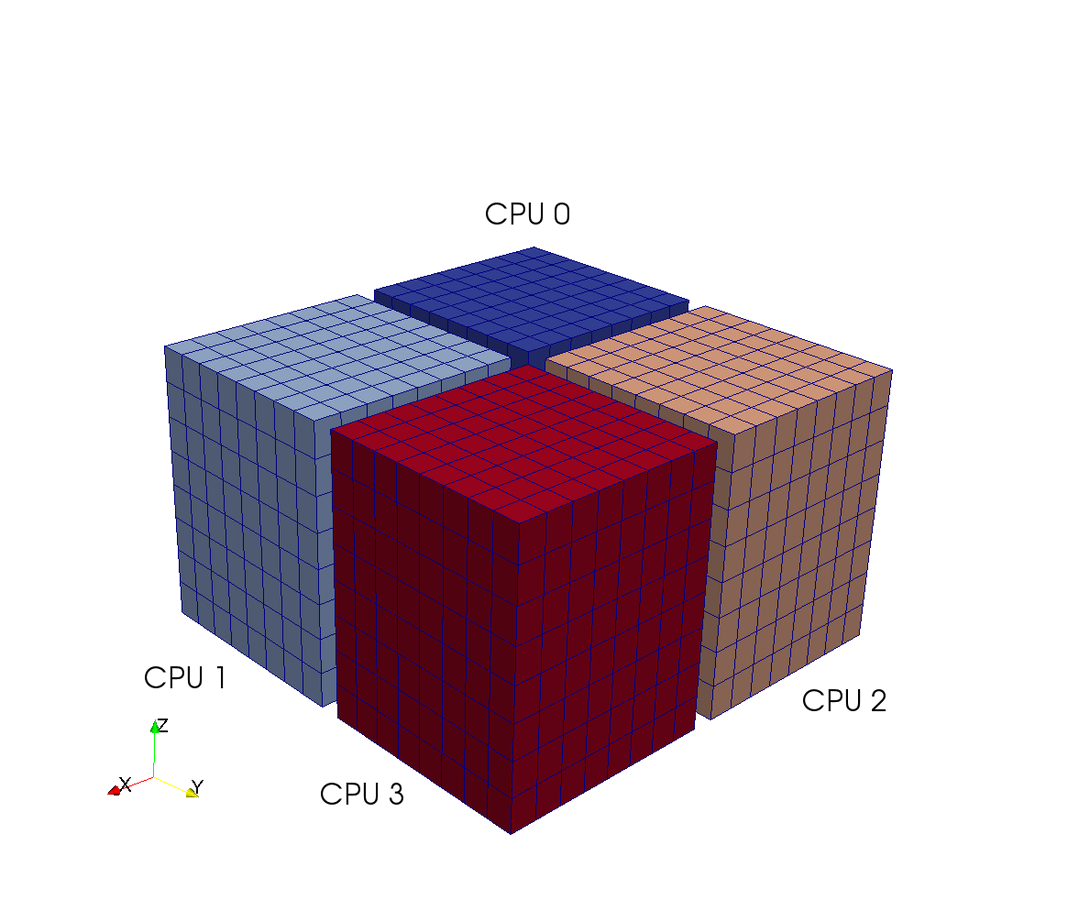
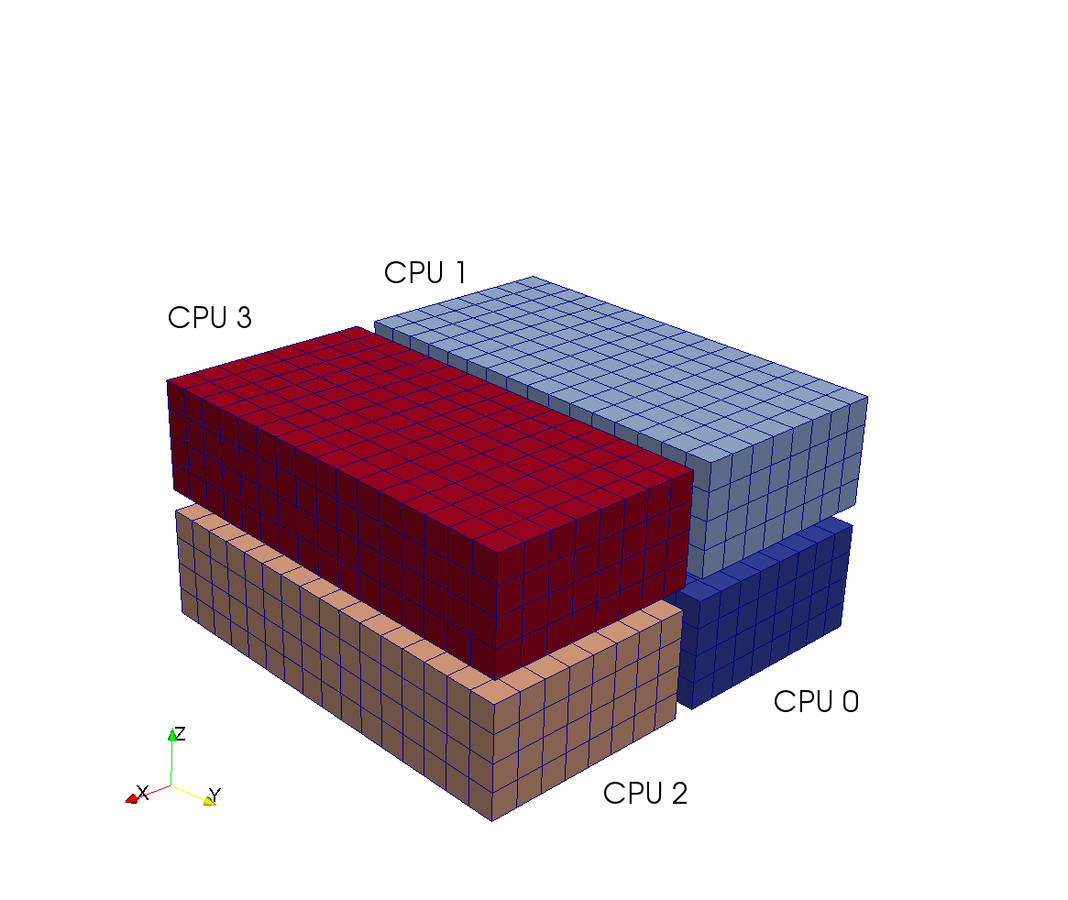
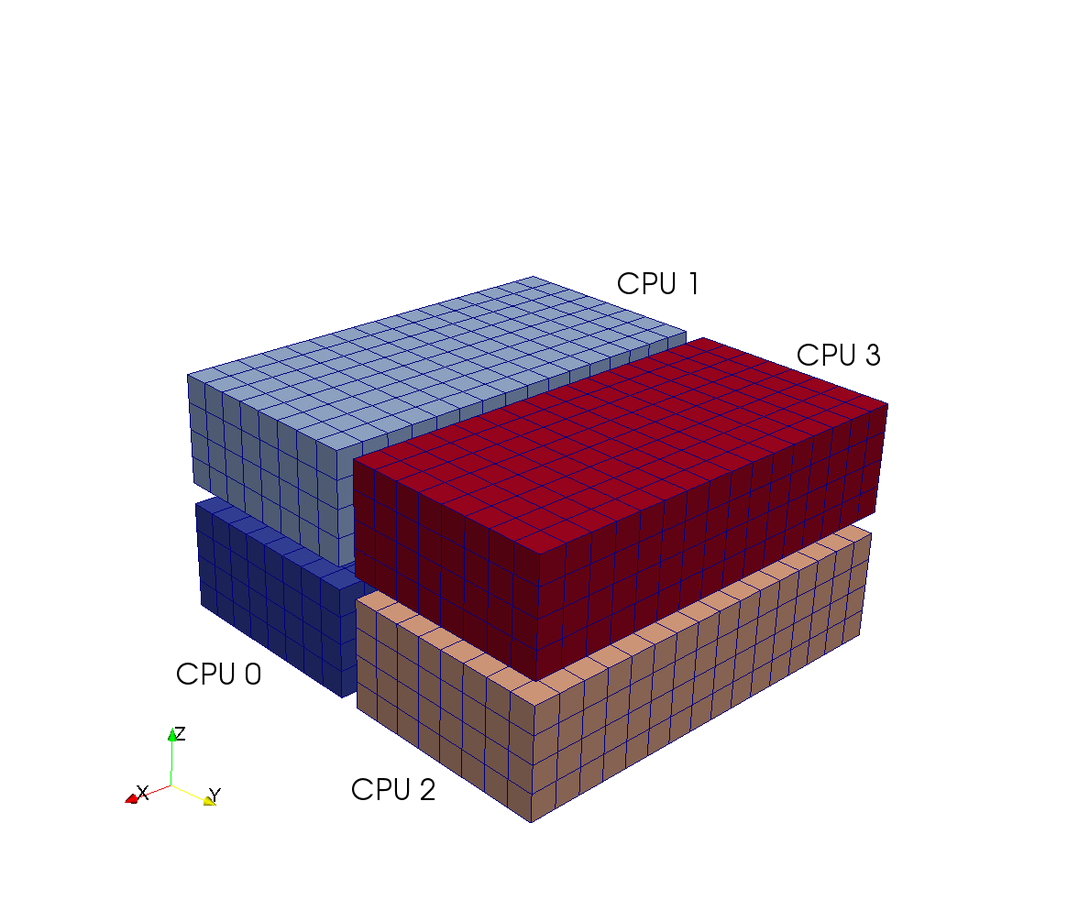
7 operations
FFT z-dir
transpose
communicate
FFT y-dir
transpose
communicate
FFT x-dir
7 lines of code!
Pencil decomposition
Implementation
rfft(u, axis=2)
Transform
fft(u, axis=1)
Transform
fft(u, axis=0)




P1 = 2 # Parameter - Choose number of procs along x-direction
P2 = num_processes / P1 # Could use MPI.Compute_dims(num_processes, 2) to get optimal P1/P2
N1 = N / P1
N2 = N / P2
rank = comm.Get_rank()
comm0 = comm.Split(rank/P1) # Two communicators. First one to communicate in Y-Z plan
comm1 = comm.Split(rank%P1) # This one to communicate in X-Y plane
# Work arrays
Uc_hat_y = numpy.zeros((N2, N, N1/2), complex)
Uc_hat_z = numpy.zeros((N1, N2, N/2+1), complex)
Uc_hat_x = numpy.zeros((N, N2, N1/2), complex)
Uc_hat_x2 = numpy.zeros((N, N2, N1/2), complex)
def rfftn_mpi_pencil(u, fu):
"""Pencil 3D FFT"""
Uc_hat_z[:] = numpy.fft.rfft(u, axis=2)
Uc_hat_x[:] = numpy.rollaxis(Uc_hat_z[:,:,:-1].reshape((N1, N2, P1, N1/2)), 2).reshape((N, N2, N1/2))
comm0.Alltoall([Uc_hat_x, MPI.F_DOUBLE_COMPLEX], [Uc_hat_x2, MPI.F_DOUBLE_COMPLEX])
Uc_hat_x[:] = numpy.fft.fft(Uc_hat_x2, axis=0)
comm1.Alltoall([Uc_hat_x, MPI.F_DOUBLE_COMPLEX], [Uc_hat_x2, MPI.F_DOUBLE_COMPLEX])
Uc_hat_y[:] = numpy.rollaxis(Uc_hat_x.reshape((P2, N2, N2, N1/2)), 1).reshape((N2, N, N1/2))
fu[:] = numpy.fft.fft(Uc_hat_y, axis=1)
return fu
# Declare variable distributed as pencil
U = numpy.random.random((N1, N2, N))
U_hat = numpy.zeros((N2, N, N1/2), complex) # This is the transform
# Perform transform
U_hat = rfftn_mpi_pencil(U, U_hat)
Done with the FFTs, how about the rest of the code?
Local Numpy ufuncs responsible for most remaining cost

# Preallocated distributed arrays. Create array of wavenumbers
K = array(meshgrid(kx, ky, kz, indexing='ij'), dtype=float)
K2 = sum(K*K, 0, dtype=float) # Wavenumber magnitude
dU = zeros((3, N[0], Np[1], Nf), dtype=complex) # Rhs array
# Subtract contribution from diffusion to rhs array
dU -= nu*K2*U_hatBesides FFT the major computational cost is computing the right hand side using element-wise numpy ufuncs (multiplications, subtractions over the entire mesh)
Very compact code
Explicit solver
Parallell scaling
Shaheen Blue Gene P supercomputer at KAUST Supercomputing Laboratory
Testing with a transient Taylor Green flow

Enstrophy colored by pressure
The solver has been verified to be implemented correctly, but how does the pure numpy/mpi4py/pyfftw perform?
Parallell scaling
Shaheen Blue Gene P supercomputer at KAUST Supercomputing Laboratory
Testing the 100 lines of pure Python code
C++(slab) 20-30 % faster than Python (slab)
Good strong scaling
mesh =
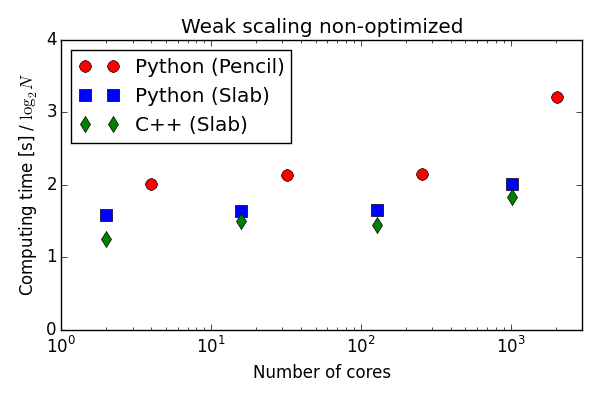
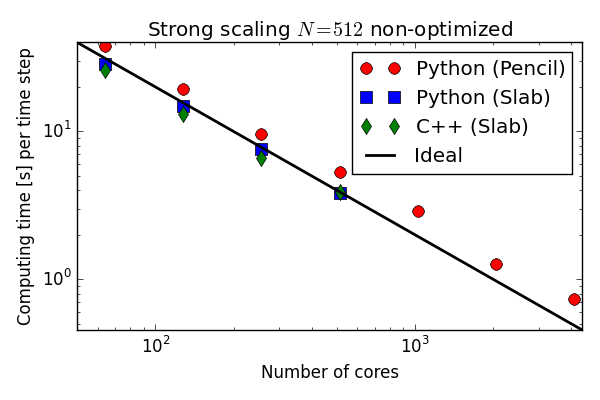
Why slower than C++?

Actually, the numpy ufuncs used to compute rhs are the main reason
Numpy ufuncs not always great
def cross(a, b, c):
"""Regular c = a x b, with vector component in axis 0."""
#c = numpy.cross(a, b, axis=0) # Alternative
c[0] = a[1]*b[2]-a[2]*b[1]
c[1] = a[2]*b[0]-a[0]*b[2]
c[2] = a[0]*b[1]-a[1]*b[0]
return c
N = 200
U = zeros((3, N, N, N))
W = zeros((3, N, N, N))
F = zeros((3, N, N, N))
F = cross(U, W, F)
Consider the cross product (required for rhs):
Too many ufuncs (multiplications, subtractions) are being called and too many temp arrays are created
Commented out regular numpy.cross is also using ufuncs and is about the same speed
Getting rid of some temp arrays helps
def cross(a, b, c):
"""Regular c = a x b, with vector component in axis 0."""
c[0] = a[1]*b[2]
c[0] -= a[2]*b[1]
c[1] = a[2]*b[0]
c[1] -= a[0]*b[2]
c[2] = a[0]*b[1]
c[2] -= a[1]*b[0]
return c
Approximately 30% faster (for N=200),
but still too many ufuncs being called. Too many loops over the large 4D arrays a, b, c
Only viable solution
is to hardcode the cross product into one single loop
@jit(float[:,:,:,:](float[:,:,:,:], float[:,:,:,:], float[:,:,:,:]), nopython=True)
def cross(a, b, c):
for i in xrange(a.shape[1]):
for j in xrange(a.shape[2]):
for k in xrange(a.shape[3]):
a0 = a[0,i,j,k]
a1 = a[1,i,j,k]
a2 = a[2,i,j,k]
b0 = b[0,i,j,k]
b1 = b[1,i,j,k]
b2 = b[2,i,j,k]
c[0,i,j,k] = a1*b2 - a2*b1
c[1,i,j,k] = a2*b0 - a0*b2
c[2,i,j,k] = a0*b1 - a1*b0
return cCython, Numba or Weave will all do the trick
Numba and Cython perform approximately the same
and as fast as C++!
Approximately 5 times faster than original
Solver optimized with Cython
More than matches C++ on the Blue Gene P!
(Numba you say? You try to install Numba on a Blue Gene)
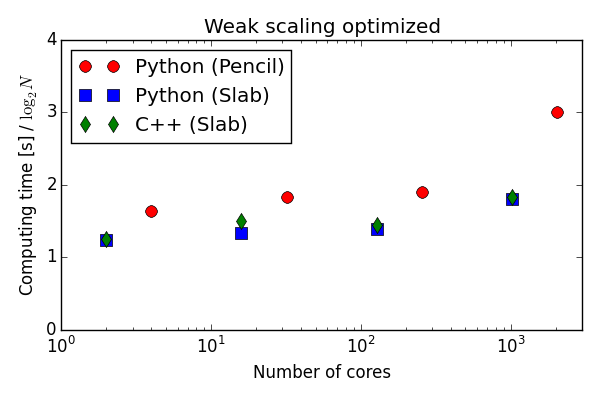
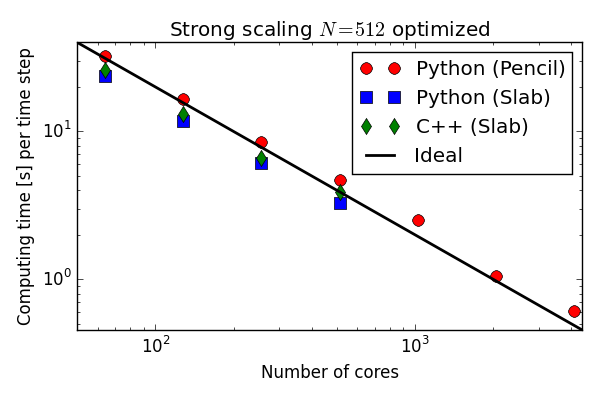
How about Shaheen II?
Scaling tests on Shaheen II from Monday 2/5!
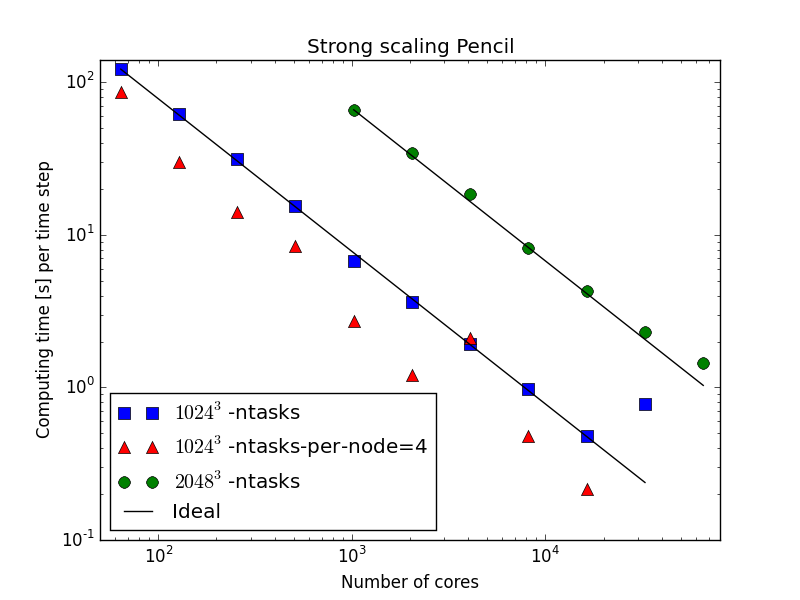
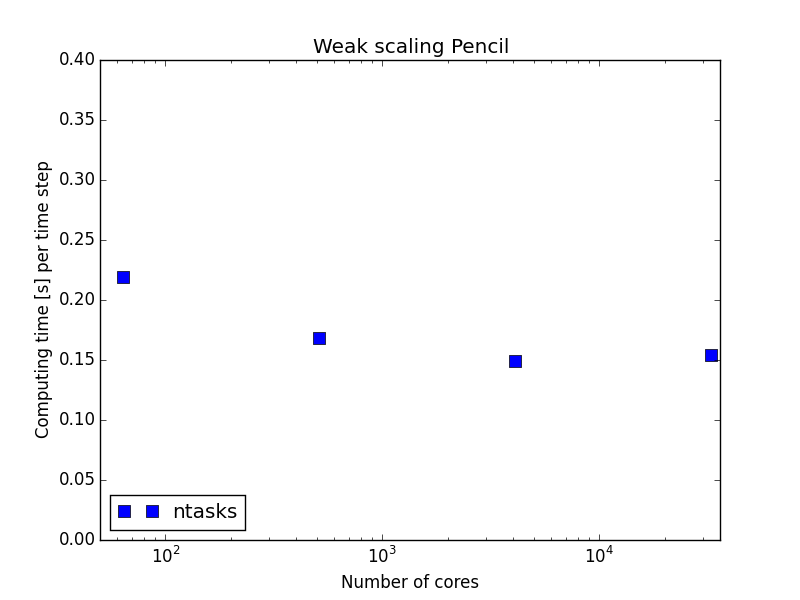
mesh size = per task
65536 tasks!
ntasks - Using just ntasks in sbatch script
ntasks-per-node specifies tasks per node
Scaling tests on Shaheen II from Monday 2/5!

mesh size = per task
65536 tasks!
mesh =
per task
Word of warning
2048 nodes, or 65536 tasks, take about 13 minutes to load Python and get started
Should have been using larger mesh

Slab results
mesh size = per task
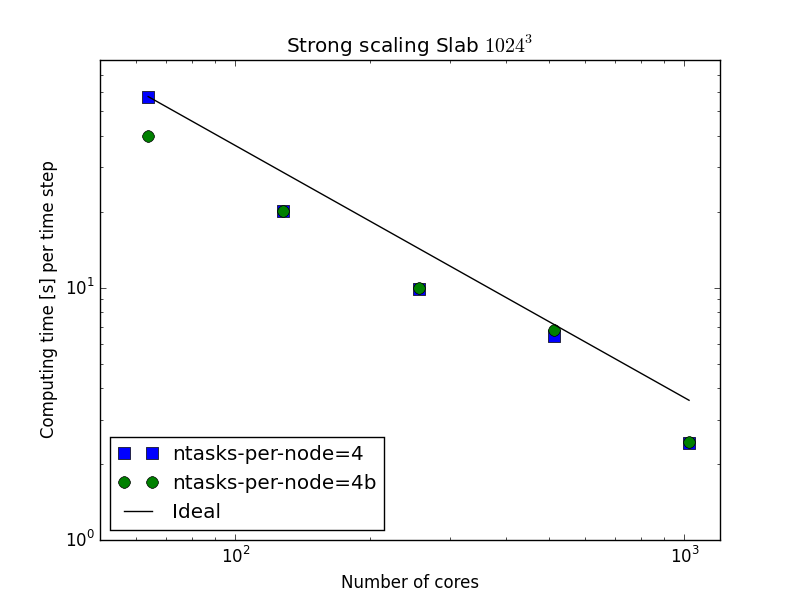
Mesh a bit too big per cpu
Would like to try smaller next time:-)
Very good scaling, but the ntasks-per-node issue
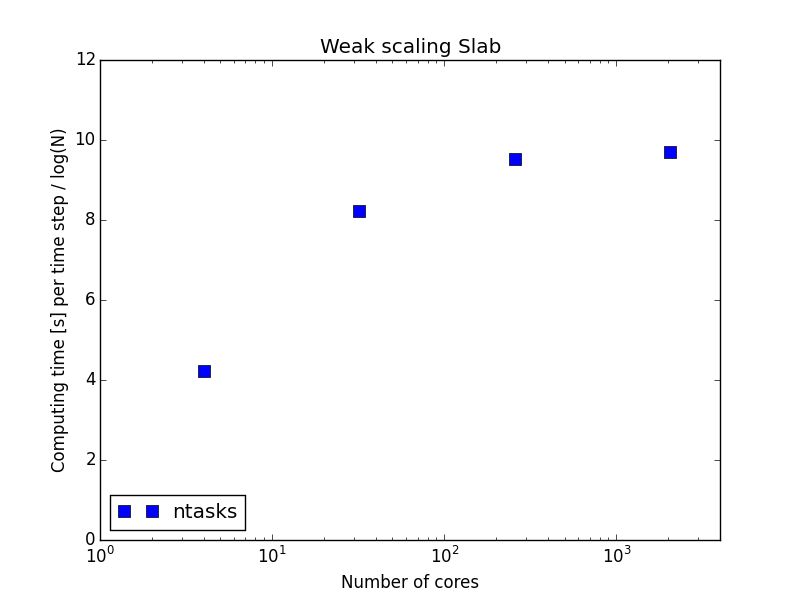
Summary
-
A pure Python DNS solver for turbulent flows can be created from scratch with less than 100 lines of Python code!
-
This code can run on thousands of processors with billions of unknowns and almost as fast (30-40% slower) as pure C++
-
With a few routines moved to Cython, the Python based solver matches the performance of C++
-
Interested in helping out? Think you can do better?
-
https://github.com/spectralDNS
-
Currently DNS solvers for incompressible/variable density Navier Stokes and Magneto Hydro Dynamics Isotropic (triply periodic) and channel flows
-
Turbulent Channel solver
Currently running with using 512 CPUs on ShaheenII
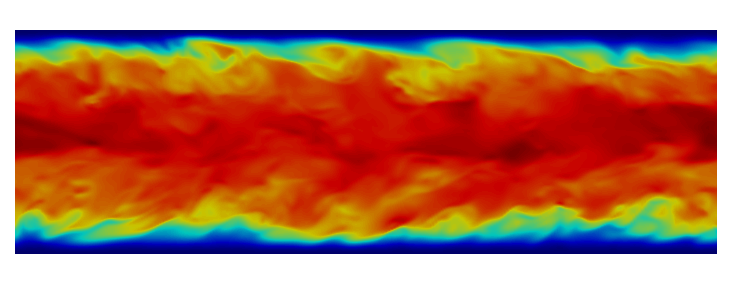
Thanks also to Hans Petter Langtangen at UiO/Simula
and David Ketcheson and Bilel Hadri at KAUST
Thank you for your attention!
Massively parallel at KAUST
By Mikael Mortensen
Massively parallel at KAUST
- 811



